Ultimate Guide to Lithium-ion Battery Storage
Lithium-ion batteries are a fire hazard. So how should lithium batteries be stored?
In general, lithium-ion (Li-ion) batteries should not be stored for extended periods of time, either uncharged or fully charged. The best storage method, as determined by extensive experimentation, is storage at low temperature, not below 0°C, at 40 to 50% capacity. Storage at 5°C to 15°C is optimal. Since lithium batteries self-discharge, it is recommended that they be recharged every 12 months.
You can further divide into short-term storage and long-term storage.
Short-term storage: store the battery in a dry place without corrosive gases and at a wet bulb temperature between -20℃-35℃, at higher or lower temperatures, the metal parts of the battery may rust or the battery may leak.
Long-term storage: because long-term storage causes the passivation of battery activity and accelerates self-discharge, the ambient temperature should preferably be between 10℃-30℃, also it is necessary to perform charge/discharge cycle every 3 months to maintain the activity and recovery performance.
Charge 40% to 50% of the battery charge and cool it in a dry environment. Cooler temperature and less charge is conducive to maintaining battery life, but too little charge can not be, because the battery will self-discharge in storage, once the battery is slowly out of power, it will seriously shorten the battery life.
The extent of the effect can be related to the following relationship between the storage temperature of lithium batteries and the rate of permanent loss of capacity.
| Storage Temperature (℃) | 40% State of Charge(SOC) | 100% State of Charge(SOC) |
|---|---|---|
| 0 | 38%(one year later) | 94%(one year later) |
| 25 | 36%(one year later) | 80%(one year later) |
| 40 | 32%(one year later) | 65%(one year later) |
| 50 | 25%(one year later) | 60%(one year later) |
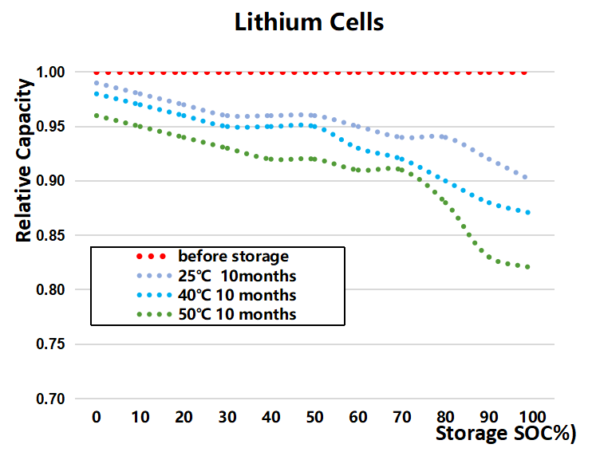
Is it necessary to remove the battery from a device during prolonged periods of inactivity
Yes. There is also a small current flowing through the switched-off device, which causes a complete discharge, which can damage the battery over time and in the worst case destroy the device.
To help you understand lithium battery storage, we have compiled a list of prohibitions.
1. It is important to avoid charging the battery in conditions of extreme heat or in the presence of fire. Do not use or store the battery near a heat source (such as a fire or heater). If the battery leaks or emits a strange odor, remove it from the open flame immediately;
2. if the battery swells, leaks, etc., stop using it immediately.
3. Do not put the battery into water or get it wet.
4. do not throw the battery into fire or heat it.
5. do not connect the battery directly to a power outlet or car cigarette lighter.
6. do not short the positive and negative terminals of the battery with wires or other metal objects. Transporting or storing batteries with necklaces, hairpins, or other metal objects is not allowed.
7. do not bump, acupuncture, step on, modify or expose the battery to the sun, and do not store it in a microwave or high voltage environment.
8. do not hit, throw or subject the battery to mechanical shock.
9. Use regular matching lithium battery charger to charge the battery, do not use inferior or other types of chargers to charge the lithium battery.
10. Under no circumstances should the battery be disassembled.
11. do not mix the battery with metal objects, so that the metal objects do not touch the positive and negative electrodes of the battery and cause a short circuit, which may damage the battery or even cause a hazard.
12. do not use primary batteries (e.g. dry cell batteries) or batteries with different capacities, models and types.
13. do not use the battery if it has a peculiar odor, heat, deformation, discoloration, or other abnormal appearance. When the battery is in use or being charged, it should be immediately removed from the electrical appliance or charger and not used.
14. when transporting, make sure the battery is moisture-proof, not crushed, not collided, etc., to avoid damage to the battery.
15. do not use the battery in high temperature (in the hot sun or in a very hot car), otherwise, it may cause the battery to overheat, fire or malfunction, which will shorten its service life.
16. Do not store the battery in places with strong static electricity and strong magnetic fields, otherwise the safety device of the battery can be easily damaged and safety will be affected.
17.If the battery exhibits a strange odor, heat, discoloration, deformation, or other abnormality during use, storage, or charging, immediately remove the battery from the instrument or charger and discontinue use.
18. To avoid fire and explosion, it’s necessary to cover discarded batteries with insulating paper.
Lithium battery Storage Checklist
Remove the battery from the instrument before storage.
Charge or discharge the battery to 3.8 V (use the charger set to “storage mode” or use a voltmeter to check the voltage).
Use insulating material (e.g., plastic, electrical tape) to protect the battery terminals.
Place the battery in a fireproof bag/container.
Storage location “Lithium-ion battery only”.
Room temperature and no heat source
Dry and well ventilated place
To ensure safety, please eliminate any flammable items (such as wood, carpet, and gasoline) and consider using ceramic or cement surfaces instead.
It is necessary to have a fire extinguisher that uses ABC or water nearby. And know its location
Factory storage measures
1. The cell or battery storage areas should be set up independently.
Put up conspicuous signs at the storage places with the inscription “Fireworks prohibited”. It is strictly forbidden to stack flammable and combustible objects nearby.
2. The temperature of cell or battery storage should be controlled within a range of 20±5℃,
The maximum should not exceed 30℃,
The relative humidity should not be higher than 75%.
Keep the storage clean, dry and well ventilated, and do not store other items.
3) Cell or battery storage should be equipped with smoke and temperature alarm devices, and the alarm signal should be transmitted to a place where someone is on duty 24 hours a day.
4) Cell or battery storage facilities should be equipped with independent external accident extraction devices.
Accident extraction devices should be interlocked with smoke and temperature alarm devices.
5) Cells and batteries should be stored neatly and not stacked too high, and storage facilities should be made of non-combustible material and antistatic measures should be taken.
6) The positive or negative terminal of each battery (cell) should be insulated to prevent short circuit protection measures.
7) Automatic sprinkler systems shall be installed in the battery storage area.
8) Battery shall not be stored at full capacity, it is recommended to store at 50% capacity.
9) Semi-finished batteries should be provided with protective plates.
10) Waste batteries should be stored separately after they are discharged.
11. Each fire safe zone of battery and cell storage should not exceed 250 square meters.
12. Battery and cell storage should have a sufficient number of spherical automatic dry powder fire extinguishers or sprinklers.
13.The battery and cell stores should be equipped with 2 fire blankets each and a special bucket for handling accidental batteries.
PS:
1. Explosion-proof electrical equipment should be used in battery storage and aging rooms.
2. Defective batteries and spent batteries must be placed in special treatment cabinets for isolation and disposal, and the use of explosion-proof sand buckets for handling accidental batteries is recommended.
Storage measures for daily lithium battery users
1. The cell or battery storage areas should be set up independently.
Put up conspicuous signs at the storage places with the inscription “Fireworks prohibited”. It is strictly forbidden to stack flammable and combustible objects nearby.
2. The temperature of cell or battery storage should be controlled within a range of 20±5℃,
The maximum should not exceed 30℃,
The relative humidity should not be higher than 75%.
Keep the storage clean, dry and well ventilated, and do not store other items.
3) Cell or battery storage should be equipped with smoke and temperature alarm devices, and the alarm signal should be transmitted to a place where someone is on duty 24 hours a day.
4) Cell or battery storage facilities should be equipped with independent external accident extraction devices.
Accident extraction devices should be interlocked with smoke and temperature alarm devices.
5) Cells and batteries should be stored neatly and not stacked too high, and storage facilities should be made of non-combustible material and antistatic measures should be taken.
6) The positive or negative terminal of each battery (cell) should be insulated to prevent short circuit protection measures.
7) Automatic sprinkler systems shall be installed in the battery storage area.
8) Battery shall not be stored at full capacity, it is recommended to store at 50% capacity.
9) Semi-finished batteries should be provided with protective plates.
10) Waste batteries should be stored separately after they are discharged.
11. Each fire safe zone of battery and cell storage should not exceed 250 square meters.
12. Battery and cell storage should have a sufficient number of spherical automatic dry powder fire extinguishers or sprinklers.
13.The battery and cell stores should be equipped with 2 fire blankets each and a special bucket for handling accidental batteries.
PS:
1. Explosion-proof electrical equipment should be used in battery storage and aging rooms.
2. Defective batteries and spent batteries must be placed in special treatment cabinets for isolation and disposal, and the use of explosion-proof sand buckets for handling accidental batteries is recommended.
FAQ on lithium battery storage
For lithium-ion batteries, studies have shown that a charge loss of 3 to 5 percent per month is possible and that self-discharge depends on temperature, battery power and design. In general, self-discharge is higher as temperature increases.
A fully discharged battery will be “squeezed” until it no longer supplies any current at all. In this instance, the voltage decreases to 0 volts.If this condition is maintained, a chemical reaction occurs between the electrodes in the battery, rendering it partially or completely unusable. As a result, the capacity of the battery is greatly reduced and it cannot be recharged. Therefore, the battery should not be discharged below the type-specific final voltage and should be recharged as soon as possible. Therefore, lithium-ion and lithium-polymer batteries should generally not be discharged until they are completely unusable.
As a rule of thumb, lithium-ion or lithium-polymer batteries should be recharged at about 10 to 20 percent of their remaining capacity. Good lithium-ion batteries usually have extensive protection and/or monitoring circuitry within the battery pack to prevent complete discharge/overcharge and explosion.
3. What is the recommended temperature range for using a lithium battery?
Lithium-ion batteries can be used in a temperature range of -20°C to +55°C. However, charging can usually only take place at temperatures between +0°C and +45°C.
4. How long is the battery life?
Under optimal conditions, lithium-ion batteries can be charged up to 1,000 times, but the number of charges may vary depending on the battery’s capacity. Depending on the handling and maintenance of the battery, the number of cycles may decrease. During the service life, the capacity decreases. Generally, the battery is said to be worn out when its rated capacity is less than 70%.
5. What is the memory effect (in NiCd technology) and/or the “lazy battery effect”?
The battery remembers the intensity of its use. If the battery is not fully discharged before recharging, small crystals will form on the electrodes and they will be less likely to accept an electric charge. So, if the battery is not fully discharged gradually, the operating time of the battery becomes shorter and shorter.
In the case of NiMH technology, a battery inertia effect (lazy battery effect) occurs, which is comparable to the classic memory effect. It is possible and permissible to recharge lithium-ion and lithium-ion polymer batteries at any time.These batteries have no memory effect and should only be recharged at short intervals. Even a full charge in several stages, with or without partial discharge in between, will not cause any damage.
Lithium-ion and lithium-ion polymer batteries, however, should not be fully discharged.
After the experiment, you should recharge the lithium-ion polymer battery when it still has about 10 to 20% of its capacity. Note that disconnecting a fully charged battery and reconnecting it to the charger will not increase the charge. This procedure will affect the performance of the battery.

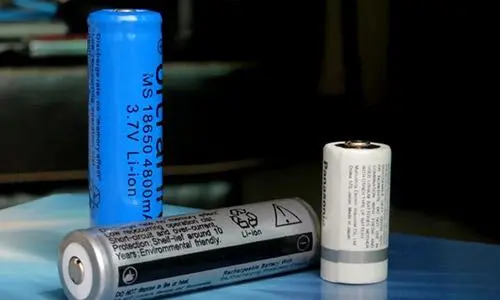


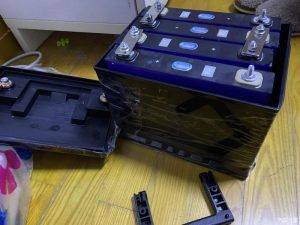
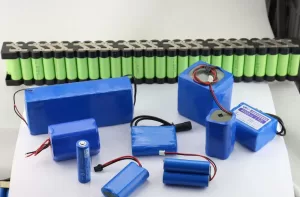
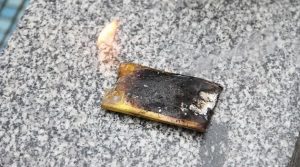
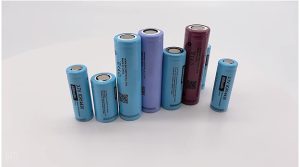
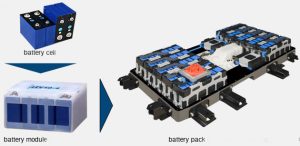
Leave a reply